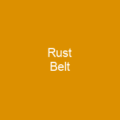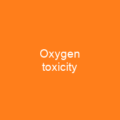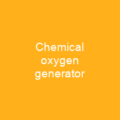Rust: The Silent Enemy of Metal
Imagine a once-shiny piece of iron slowly turning into an unrecognizable, flaky mess—this is the reality of rust. Have you ever wondered what exactly causes this transformation? Rust is not just a simple change in color; it’s a complex chemical reaction that can significantly impact the lifespan and functionality of metal objects.
The Formation of Rust
Rust, scientifically known as iron oxide, forms when iron or steel comes into contact with oxygen and moisture. Think of rust as a slow, relentless thief, gradually stripping away at your metal treasures. The process begins when water seeps through tiny cracks in the metal surface, allowing hydrogen atoms to react with other elements and form acids that further corrode the iron.
Different Forms of Rust
Rust doesn’t just come in one color or form. Did you know there are various types of rust? Green rust, for instance, can be found on underwater concrete pillars, adding a unique twist to its appearance and behavior.
The Electrochemical Dance: How Rust Forms
Rust is not just about water and oxygen; it’s an electrochemical process. Imagine the iron as a performer, giving up electrons in a dance with oxygen, resulting in rust formation. The key reactions include the reduction of oxygen to hydroxide ions and the oxidation of iron to form iron(III) ions. These reactions are crucial in understanding how rust spreads across metal surfaces.
Preventing Rust: A Battle Worth Fighting
To keep your metals safe, you need a strategy. How do you protect against this silent enemy? Coatings like paint and galvanization (applying zinc) are common methods to slow down rust formation. In more aggressive environments, cadmium plating might be preferred due to its longer lifespan.
Cathodic Protection: A Last Resort
If coatings aren’t enough, cathodic protection can step in. This method involves supplying an electrical charge to make the iron or steel a cathode, effectively stopping corrosion. It’s like giving your metal a superhero shield against rust.
Removing Rust: A Clean Slate
Once rust has taken hold, it can be challenging to remove. How do you tackle this stubborn foe? Simple household items like washing soda and tap water can help strip away the rust, while commercial products containing tannic acid or phosphoric acid offer more potent solutions.
The Impact of Rust: Beyond Just Appearance
Rust isn’t just about aesthetics; it’s a serious issue. Think of the Silver Bridge disaster in 1967 and the Kinzua Bridge collapse in 2003—both were caused by rust. Reinforced concrete is also vulnerable, leading to structural problems that can compromise safety.
Rust as a Metaphor: Decay and Neglect
Beyond its physical effects, rust serves as a metaphor for slow decay due to neglect. The ‘Rust Belt’ in the American Midwest and Northeast is a prime example of this concept. It’s a reminder that even the strongest structures can crumble over time if not maintained properly.
Rust in Art, Literature, and Music
Rust has found its way into art, literature, and music as well. It symbolizes faded glory, neglect, decay, and ruin, often evoking a sense of melancholy or nostalgia. Think of the imagery used to describe rust in songs or paintings—each piece telling a story of loss and change.
The Silver Lining: Controlling Humidity
In some cases, controlling humidity can prevent rust formation. By managing the environment around your metal objects, you can significantly reduce their risk of corrosion.
Rust: A Persistent Challenge in Metal Protection
Rust is a formidable adversary that requires constant vigilance and strategic defense. From understanding its formation to implementing effective prevention methods, the battle against rust is ongoing. By recognizing the importance of maintaining metals and structures, we can ensure their longevity and functionality for years to come.
You want to know more about Rust?
This page is based on the article Rust published in Wikipedia (retrieved on March 11, 2025) and was automatically summarized using artificial intelligence.







